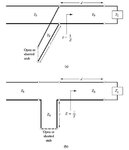CarlosFH
Junior Member level 1
Hi all!
Is it possible to build a doble-stub tuner using one of these combinations: (serial stub + shunt stub) or (serial stub + serial stub)?
Thanks in advance.
Is it possible to build a doble-stub tuner using one of these combinations: (serial stub + shunt stub) or (serial stub + serial stub)?
Thanks in advance.


